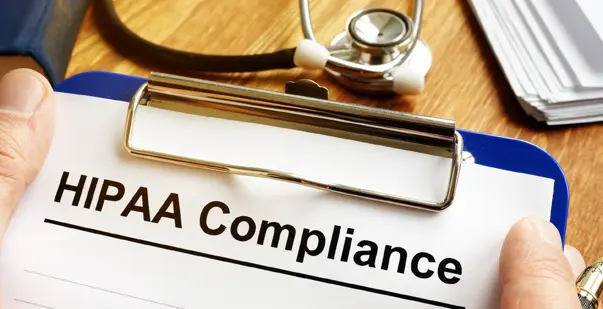Is Zoom HIPAA Compliant?

August 5, 2024
With healthcare going more virtual than ever, tools like Zoom for healthcare are showing up everywhere—from therapy sessions to quick check-ins with your doctor. It’s convenient, familiar, and easy to use. But here’s the thing: when patient information is involved, privacy isn’t just a nice-to-have. It’s the law.
That’s where HIPAA comes in—the Health Insurance Portability and Accountability Act. It lays out exactly how Protected Health Information (PHI) should be handled. So if you’re a healthcare provider using Zoom, you’ve probably wondered: Is this actually HIPAA compliant?
Let’s dig into that. We’ll break down how Zoom works, what it offers in terms of security, and what it takes to stay on the right side of HIPAA.
Let’s Zoom in on Zoom
Zoom’s a video chat tool that works over the internet. You can use it for meetings, webinars, or just catching up with people from different places. It’s cloud-based, so there’s nothing fancy to install, and everything runs online.
It first showed up in 2011 and pretty quickly took off. A big reason? It’s easy. You don’t need to be tech-savvy to use it—and that’s made it popular everywhere from offices to hospitals.
In fact, during the COVID-19 pandemic, Zoom became the most dominant platform in healthcare, capturing over 36% of the telehealth market share.
🔗 Read More: Most Common HIPAA Violations You Should Avoid
What Are Some of Zoom’s Key Features?
Zoom has a lot going for it. It’s known for being simple to use, but it also offers a wide range of tools that make it useful in both everyday and professional settings. Beyond the basics, it also includes several security features—like encryption, passwords, and waiting rooms—to help protect your data during calls.
Here are some of the main things you can do with Zoom:
- Video and audio calls: At its core, Zoom is built for high-quality video and voice meetings. Whether it’s a quick one-on-one or a full team session, it handles both well.
- Screen sharing: You can show your entire screen—or just one app—to others in the meeting. This is especially handy for presentations or working together on a document.
- Meeting recordings: Zoom gives you the option to record your meetings. That’s useful if you want to go back later for notes, share the conversation, or use it for training.
- Breakout rooms: Need to split a big group into smaller ones? Zoom lets you do that with breakout rooms—perfect for side discussions or team activities.
- Webinars: Zoom also supports larger-scale webinars. You can set up registration, run Q&A sessions, and even include polls.
- Chat: During a meeting, people can send messages—either privately or to everyone. It’s great for quick notes or side questions.
- App integrations: Zoom plays well with other tools. You can link it with calendars, project management platforms, and more to streamline your day.
- Business meetings: Teams rely on Zoom for everything from daily check-ins to full-on client presentations. It keeps remote work running smoothly.
- Education: Schools and universities use it for online classes, virtual lectures, and even parent-teacher conferences. It’s become a staple in remote learning.
- Healthcare: Zoom plays a big role in telehealth—letting doctors meet with patients remotely, monitor progress, and provide care without an in-person visit.
- Personal use: Plenty of people use Zoom just to stay in touch. Whether it’s a birthday party, a virtual hangout, or checking in with family far away, it brings people together.
Zoom and HIPAA: How Secure Is It Really?
If you’re in healthcare, following HIPAA isn’t optional—it’s the law. That means any platform you use for virtual appointments or meetings needs to protect patient data. Zoom can support HIPAA compliance, but only if it’s used the right way.
Here’s what you need to know about how Zoom handles privacy, security, and Protected Health Information (PHI):
Business Associate Agreement (BAA)
Before anything else, healthcare organizations need to have a Business Associate Agreement in place with Zoom. This document outlines how Zoom will protect PHI and what security steps it’s responsible for. Without a signed BAA, using Zoom for healthcare purposes isn’t HIPAA-compliant.
Encryption
Zoom protects the information shared in meetings by encrypting it. It uses TLS (Transport Layer Security) to secure data while it’s moving and AES-256 encryption to lock it down when it’s stored. Both are strong standards that help keep PHI safe from unauthorized access.
Access Controls
Zoom includes several tools to help limit who gets into your meetings. You can enable password protection, set up waiting rooms to screen attendees, and even lock meetings once they’ve started. These settings help prevent anyone uninvited from listening in on sensitive conversations.
Audit Logs
Zoom also provides audit trails—logs that keep track of who joined a meeting, when, and what actions they took. If there’s ever a security concern, these logs can be used to investigate and spot anything unusual.
User Authentication
To make sure only the right people can get in, Zoom offers features like single sign-on (SSO) and multi-factor authentication (MFA). These extra steps add a layer of protection and reduce the chances of unauthorized access.
Data Retention and Deletion
HIPAA says that Protected Health Information (PHI) should only be kept as long as needed—and securely deleted afterward. Zoom gives account owners the ability to manage how long meeting data and recordings are stored, helping you stay in line with retention rules.
Regular Security Updates
Zoom stays active when it comes to patching bugs and updating its security systems. Keeping the software current is a key part of staying HIPAA-compliant, so it’s important for healthcare users to stay on top of updates.
Staff Training Matters Too
Even with all the right settings, human error can still lead to HIPAA violations. That’s why it’s important for staff to get HIPAA training—not just on the law itself, but also on how to use Zoom securely. Knowing which settings to turn on (and why) makes a big difference.
🔗 Read More: What are the penalties for HIPAA violations?
Conclusion
So, is Zoom HIPAA compliant? The short answer is—it can be. But only if it’s set up the right way.
Zoom for healthcare offers tools that support HIPAA compliance, like encryption, access controls, and audit logs. However, just having those features isn’t enough. It’s up to your organization to configure them correctly, keep software up to date, and make sure your staff is properly trained on how to protect Protected Health Information (PHI).
In other words, Zoom can be a HIPAA-compliant platform—but only when used responsibly. Stay informed, follow best practices, and make sure your team understands how to handle data securely. That’s how you protect patient privacy in today’s virtual care environment.





